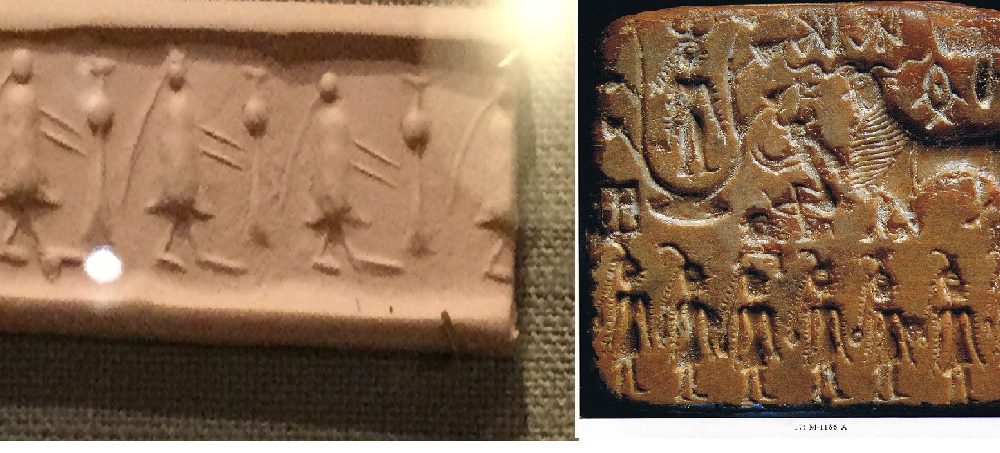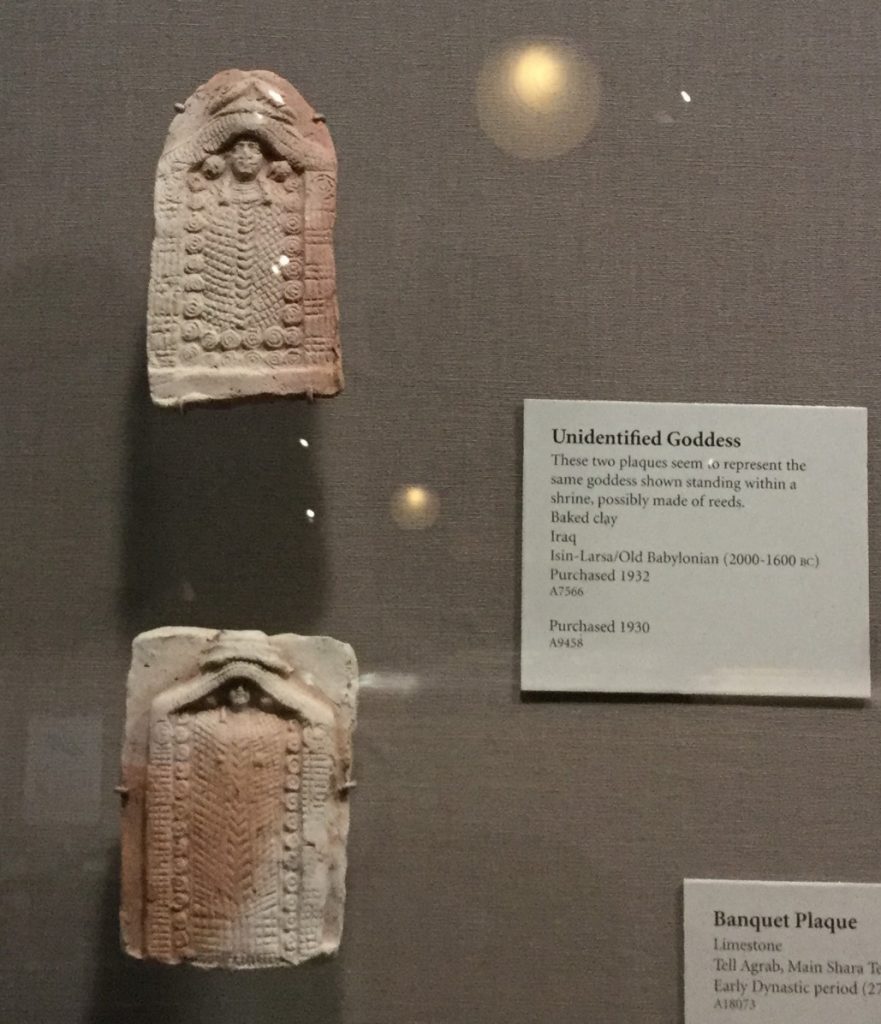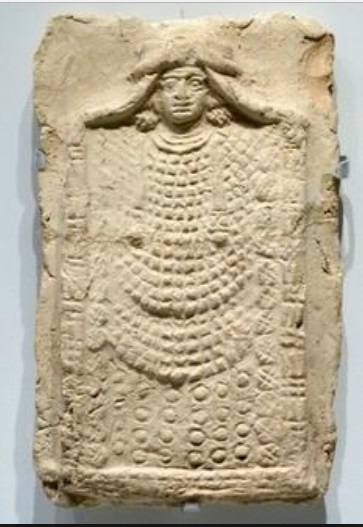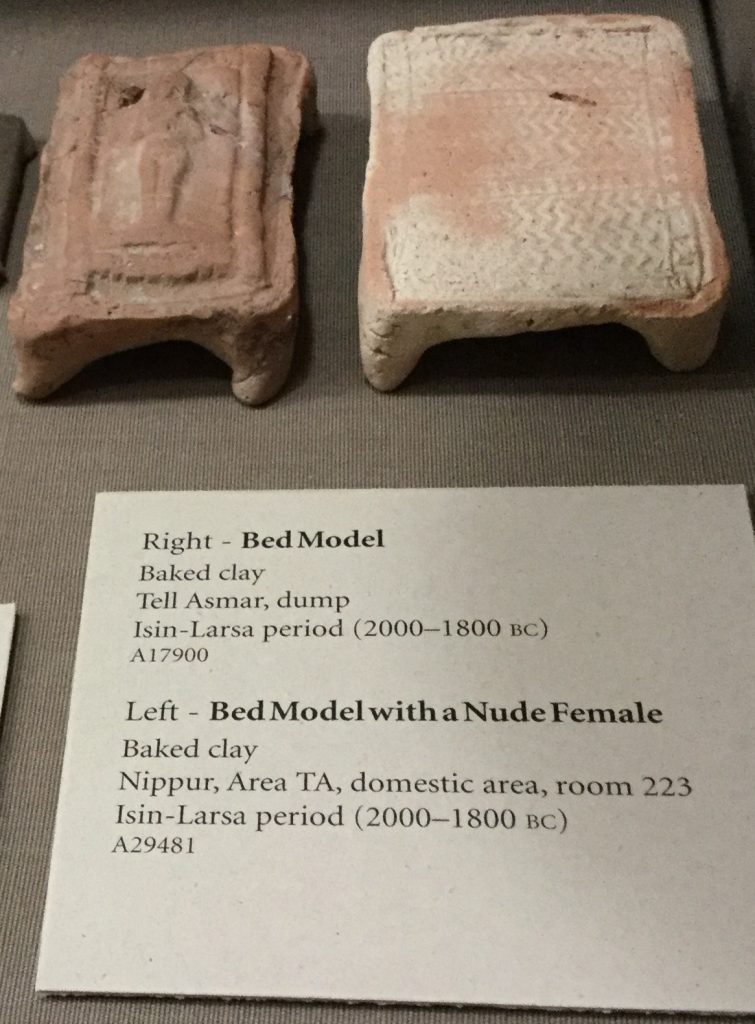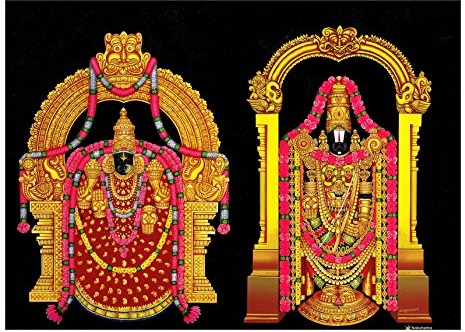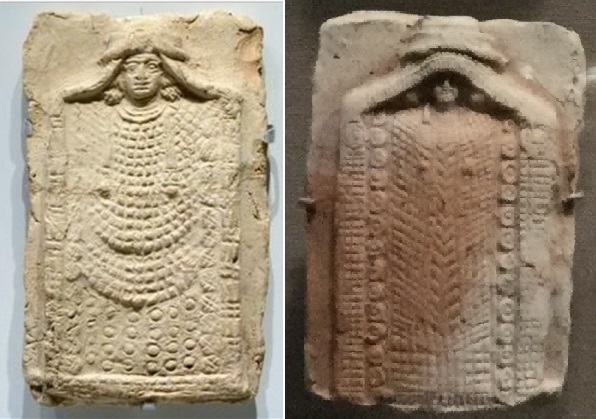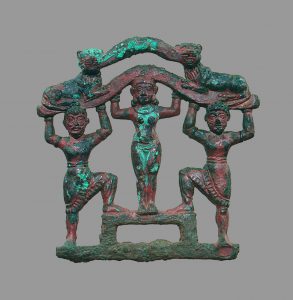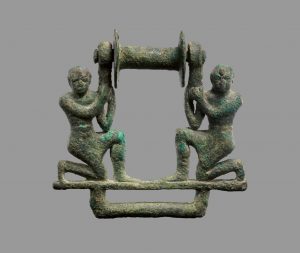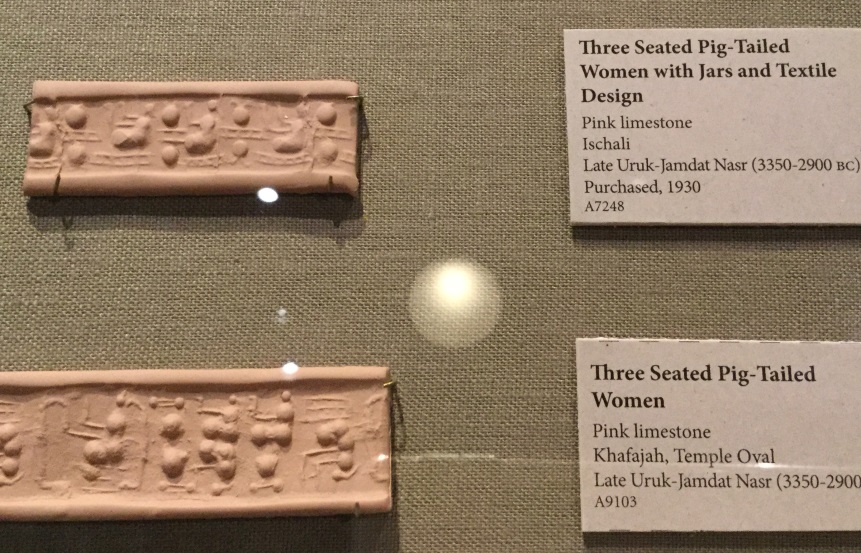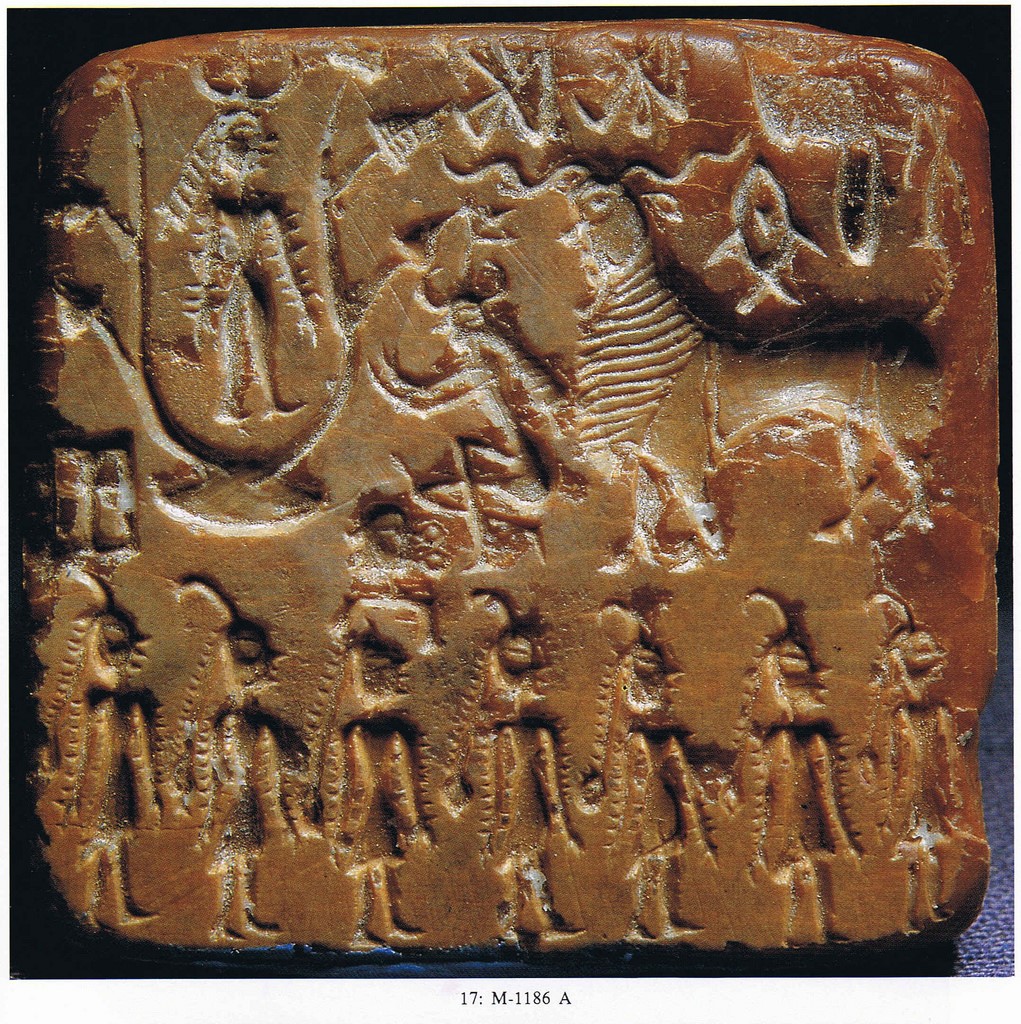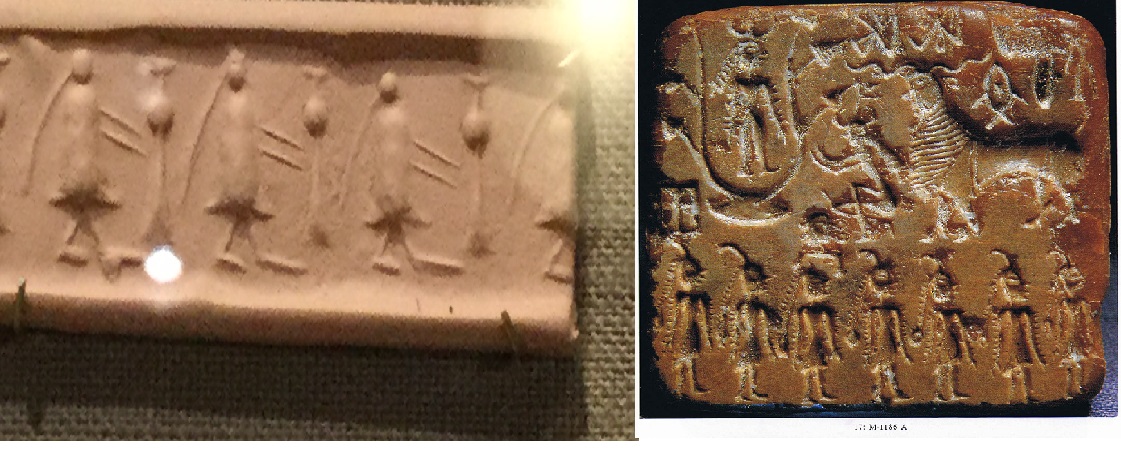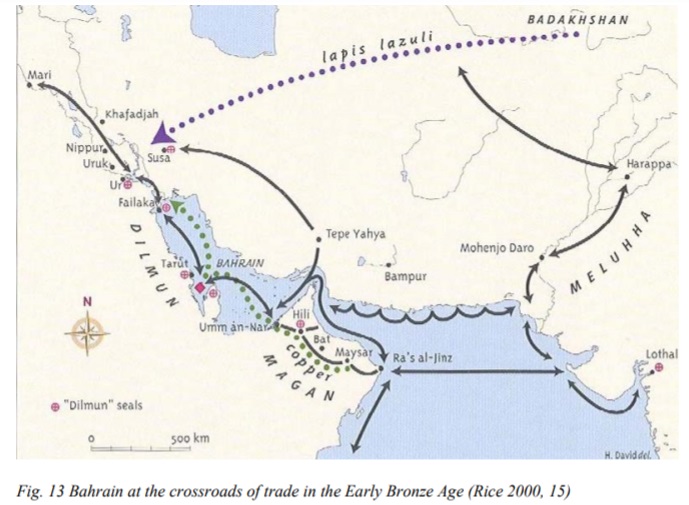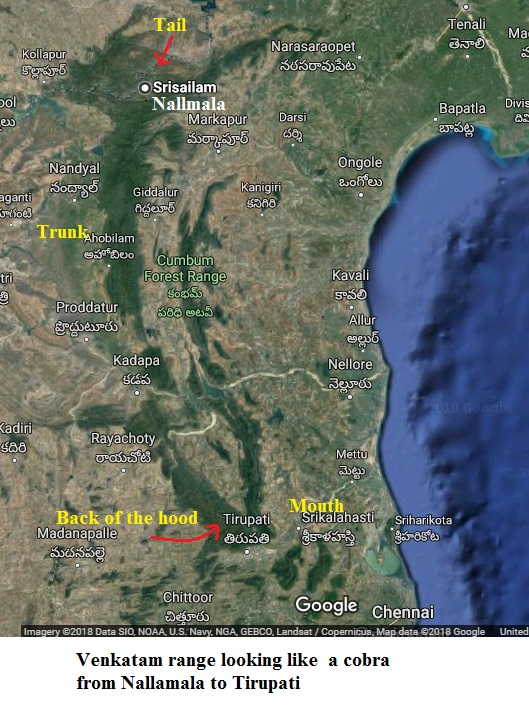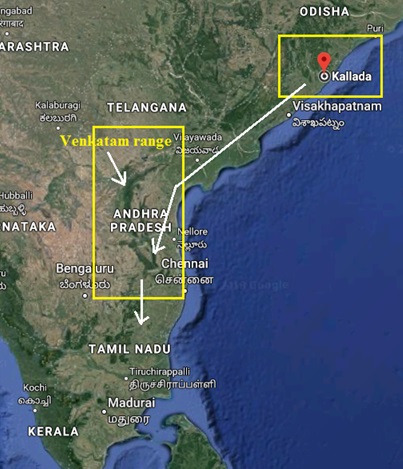The Gods of ancient Mesopotamia are many totalling to more than 3000. Yet there are some without names whose identity is beyond the perception of the researchers of the West and Near East but which are easily identifiable by anyone from India. Figures resembling the divine couples of Tirumala – Tirupati and the four faced Brahma- Saraswathi, Shiva linga, Bhuvaneswari and Hanuman are found among the Gods of Isin-Larsa and Old Babylonian period of the early 2nd Millennium BCE. Housed in the Oriental Institute Museum of the University of Chicago these figures stand out in marked contrast to the numerous other Gods of the Mesopotamian pantheon that reached the maximum head-count in that period. That period also witnessed the highest level of scribal activity, creation of myths, poems and art works. Perhaps the dynasties of Isin and Larsa and the longest ever reign of a Sumerian king falling in that period (of Rim-Sin) attracted traders from all directions whose co-existence led to the transmission and transfusion of their respective cultures and god-heads. It is in this background we are going to discuss the plaques and seals that resemble popular Hindu Gods.
The first figures that struck this writer on her recent visit to this Museum in Chicago were two exhibits that bear close resemblance to Lord Venkateśvara of Tirumala Hills! Made of some form of clay, they are mold-impressions of hardly three inches long. Having no parallel with any other image discovered in the region, these impressions have been termed as Goddesses, standing inside a shrine made of reeds. But to a person coming from India, these images resemble the God of Tirumala.
Though not of the same mold, the figures are hardly any different from each other. The structure is self –revealing as male and not female. The unique style of the decoration of the deity of Venkateśvara can be seen replicated in these plaques. On closer examination one can find the Sankha and Chakra (conch and discus) resting on the shoulders like how it is for Lord Venkateśvara. The hands are not seen but hidden inside the long decorative fabric in the front. Perhaps this is how the decoration was done for Lord Venkateśvara in those days. But one cannot miss out the long garlands on the shoulders and hanging down from the head evenly on the two sides. This decoration is unique to Lord Venkateśvara on all days since the times our elders can recollect, but these plaques seem to convey that it has been so in the past too.
More importantly, the kind of flowery garlands found in these plaques are completely absent in every other image of God or Goddesses of Mesopotamia in display in the Museum. One figure is seen carrying flowers along with a bud (Figure 2) but flowers and garlands were never part of accessories or decoration for the deities or royal people of ancient Mesopotamia.
While on the process of collating the facts and information on Lord Venkateśvara of such an antiquity as that of the early 2nd Millennium BCE this writer kept thinking that unless the consort of Venkateśvara is found in the same region, the case for this plaque as the Hindu God Venkateśvara cannot be effectively made out, as traditionally Venkateśvara is worshiped along with his consort as a couple though his shrine is geographically away from that of his consort. Surprisingly and fortunately this writer happened to stumble upon an image in the data-base of AKG images that is exactly a look-alike of Goddess Padmavati, the consort of Lord Venkateśvara. The data-base says that this plaque was discovered in Old Babylon of the same period of early 2nd millennium BCE.
Belonging to the same age and same site as the Venkateśvara look-alike plaques, the above plaque offers the best match for those plaques in terms of the mold-creation and the decoration. This is a female and one can see the huge ear studs dangling on the sides. Wearing ear studs is unique to Vedic culture as it follows the ear-boring ceremony, a Vedic samskāra. Although quite a few images of the same Mesopotamian period are seen with ear studs, they differ in style from what is seen in this plaque. Padmavati look-alike is wearing a kind which is commonly found to adorn Hindu deities.
Like Venkateśvara images, this image also has a long garland hanging from the shoulders and another from the crown. There is a short garland from around the neck. All these are how the Hindu deities are decorated. Rows of jewellery are covering the upper part while the lower part looks like a fabric. This is exactly how Goddess Padmavati is decorated even today.
The note given along with this image says that it is a goddess lying on the bed but it cannot be so. A cross-check with a couple of beds (artefacts) excavated at the same site (Iraq) of Isin-Larsa (Old-Babylonian period) and housed at the Chicago Museum shows that they are beds with four legs. In contrast this artefact is a flat plaque with the image of the deity cast by a mould.
The posture of the deity with garlands and jewellery flowing vertically down clearly indicate that the deity is not lying on the bed. Goddess Padmavati is in seated position and this plaque also shows deity in such a position with the fabric covering the portion of the seat she is mounted on. For comparison, the divine couple as they are seen today (figure 5) is given together along with the excavated plaques (figures 6 & 7).
Further examination of the Venkateśvara look-alike shows that the long fabric covering the front is a woven material of some vegetation (reeds). The crown-like head gear also looks like made of cloth. The same observation also holds good for Padmavati look-alike, in addition to the cloth material adorning the lower part which is actually the visible part of the entire garment that is covering her front. The preliminary inference from this is that the decorative material for the Venkateśvara look-alikes of these plaques came from weavers and wild vegetation of the forest.
Of importance to mention here is that the Tamil Sangam poems on Venkatam hills (that house Lord Venkateśvara’s shrine) invariably speak about abundance of bamboo and Vengai trees (Ptrocarpus Marsupium) in the region. There is reference in a Sangam composition[i] about making dresses from Vengai leaves. The fabric worn by Venkateśvara look- alikes seem to be woven with bamboo reeds. The big, round flowers of the garland look like the products of Vengai trees (figure 8).
Only 1000 years ago, flower gardens growing specific flowers for the Lord were created at the instance of Sri Ramanujacharya. This conveys that until then the deity was decorated with wild flowers and products of the forest. The plaques unmistakably reveal the olden ways of using forest products for decoration. The continuing practice of using a long cloth as a garland (Thomala) and around the head as a crown for Lord Venkateśvara seems to be the legacy of the olden practice that we can make out from the plaques.
Weavers’ deity
The woven material dominating the decoration of the images of the plaques pre-supposes the existence of weaver communities that were preparing the fabrics for the deity. As regular suppliers of the vegetative fabric and cloths to the deity, those communities could have developed close allegiance with the deity to the extent of treating it as family deity and a personal identity wherever they went. The Venkateśvara look-alike appearing in Mesopotamia 4000 years ago could not have happened without such communities moving over to Mesopotamia obviously for trading purpose.
Even today specific weaving communities are preparing the cloths for Lord Venkateśvara. Though their service started a few centuries ago, the presence of this practice can only be a continuation of an older tradition. The huge size of the deity required specially woven cloths for this deity and not just any cloths. This emphasises the fact that specific weaving communities must have been engaged in preparing the fabric in the remote past too.
A couple of bronze objects looking like weaver’s implements unearthed in Isin-Larsa in the early part of the 2nd Millennium BCE and bearing resemblance to Indian images strengthens the notion of the presence of weavers of Indian origin in that region. Figure 9 shows one of those objects whose purpose is not known but could fit with the weaver’s kit.
The female figure in the middle looks more Indian than any Mesopotamian female figure found so far, in the same period or anytime before or after. The jewellery in ears, neck, waist and hands are typical Indian style that we find in old temple sculptures of south India. The men also look different from the male figures of the comparative period. Their adornments, facial looks and cloths are Indian in style.
Figure 10 shows yet another bronze image found in the same place, same era. The roller in the image looks like a bobbin used for winding thread.
The male figures in this piece are also different from contemporary Mesopotamian males in other art works. A shaven head with a forelock is unknown in Mesopotamia, though completely shaven heads are found in Akkadian period that preceded the period under discussion. The forelocks in these images are characteristic of Cholia people of Tamil lands and also were witnessed across India in the past. A figurine found in Harappa has a similar forelock (figure 11).
Cossacks of Ukraine also sported similar forelocks but their early presence in Mesopotamia has no back-up support. The Indian-ness of these objects and the plaques of Venkateśvara look-alikes weigh in favour of a weaving community to be present in south Mesopotamia in early 2nd Millennium BCE.
Further back in time, weaver’s presence is also noticed in Uruk period of 4th Millennium BCE. The location is close to Isin-Larsa. Figures 12 and 13 show three cylinder seal impressions of women engaged in weaving, kept in Chicago Museum.
The pig tailed women bear close resemblance to the seven women of Mohenjo-Daro seal that appeared 600 years later (Figure 14)
For closer comparison, the Uruk and Mohenjo-Daro seals are shown side by side in figure 15.
The pig tailed women with similar costumes appearing in Uruk seals engaged in what looks like looms (textile making) give rise to an opinion that the Mohenjo-Daro seal was a ceremony done by weavers! This similarity is brought out here to justify the presence of weavers in south Mesopotamia in late 4th to early 2nd Millennium BCE who shared similar physical traits with people of Indus civilisation (India).
Available research works done so far have established that Lothal has served as a transit point from India to Mesopotamia via Persian Gulf. The easiest route is through Persian Gulf and not through North West India. Dr B.S During in his thesis on “Seals in Dilmun society”[ii] established on the examining the seals how Dilmun (Bahrain) served as a nodal point of trade for those entering the gulf that further takes them to south Mesopotamia. The trade routes from Lothal to Dilmun and Mesopotamia in the period 2800-1500 BCE is reproduced in figure 16 from his paper.
Authors Steffen Laursen and Piotr Steinkeller established that military conquests of Sargonic kings of Babylonia were aimed at controlling trading points and ensuring smooth business for their own subjects[iii] . Trade and commerce were the buzz words of rulers of that time.
It is worth noting here a parallel incident from Mahabharata. It is everyone’s knowledge that almost every ruler of India participated in the war. This could be possible only if the participating countries had some stakes in winning the war. The Pandyan king by name Sarangawaja refused to side with the Pandavas as he wanted to avenge Krishna for having killed his father (previous enmity). But he was discouraged from doing that by his friends in the Pandava camp (Drishtadymna)[iv]. What could have weighed in favour of keeping aside his personal enmity and siding with the Pandavas? Only if a larger good is assured in return for his country, this Pandyan king could be expected to have for kept aside his personal grouse. That larger good could in all possibility be economic and commercial returns.
If by siding with the Pandavas and Krishna, the Pandyan traders could get easy and hassle-free access to the ports of Dwaraka (Gujarat) in the event of Pandavas winning the war, then the Pandyan king had no other choice than burying his personal enmity and backing up the Pandavas. The traditional date of Mahabharata war coinciding with Early Harappan period and the rise of Lothal as a busy port concur well with Indic history as revealed in Mahabharata. By keeping control over the ports in west coast of Gujarat, entire South India that sided with Pandavas stood to benefit while the north Indian traders could have chosen Gandhara- route that was with Kauravas before the war.
Until now everyone has been talking about Indus regions. There is absolutely no thought about south India. The Tamil kingdoms existing for long and grand rivers draining the lands of south India offer enormous scope for evolution of economically profitable occupations well before the Indus civilization. The nearest points of transit to enter west Asia and Europe were the ports of Arabian Sea. The closest and safest port (from monsoon vagaries) was Lothal.
It is in this backdrop, the movement of weavers of south India who were once serving Lord Venkateśvara, to Mesopotamia through western ports and Persian Gulf looks very much viable. Both Gujarat (Saurashtra) and Andhra Pradesh are known for traditional weaving practices. Anyone from these regions could have taken their families and family deities to Middle East.
Conducive atmosphere for trade in Isin-Larsa period had attracted people from all sides. The culture, language and religious beliefs of all the new entrants were absorbed leading to the formation of Anunnaki – group of various and numerous deities that dominated Mesopotamia for over two millennia later. The Hindu deities too have contributed to the diffusion of Thought (to be discussed in upcoming articles) but Venkateśvara stands out from other deities in this regard. There is no trace of Venkateśvara in Anunnaki and no trace of the people (who carried memory of this deity) further in time. May be they were absorbed in the local community or had gone beyond the Middle East. This probability must be borne in mind in any genetic study that finds a link with south Indians or Indians.
This monograph cannot end here without ascertaining an antiquated presence of Lord Venkateśvara at Tirupati hills on par with the date of the plaques found in Isin-Larsa 3500 years ago.
Antiquity of Venkateśvara temple at Tirupati
There are literary evidences from Tamil Sangam texts in support of antiquity of Lord Venkateśvara.
The earliest reference to the presence of this deity on top of the hill is found in the 2000 year old* Tamil Epic called Silappadhikaram. Tirupati was known as ‘Venkatam’ in those days. A Brahmin from Mangadu near Kudamalai (Kodagu) on a pilgrimage to worship Vishnu at Srirangam and Venkatam describes the deities of these two places. As per his description the deity at Venkatam was standing in between the sun and the moon, with the conch and discus in his hands and adorned with beautiful garland on his chest and a fabric dotted with golden flowers.[v] The reference to sun and the moon is because of the strategic location facing the east as one can see the luminaries on the two sides of the temple and crossing the temple every day.
This description conveys that this deity was popular 2000 years ago. Yet another reference to Venkatam comes in the same text when a newly married couple belonging to Northern Chedi travelled to Pumpukar to witness the Indra festival. After celebrating the Festival of Kama deva (on the Full Moon day of Phalguna month when the Sun is in Pisces – today’s Holi festival), they crossed the highs of Himalayas and then the river Ganga and reached Ujjain. From there they went to Venkatam hills before going to Pumpukar. [vi]
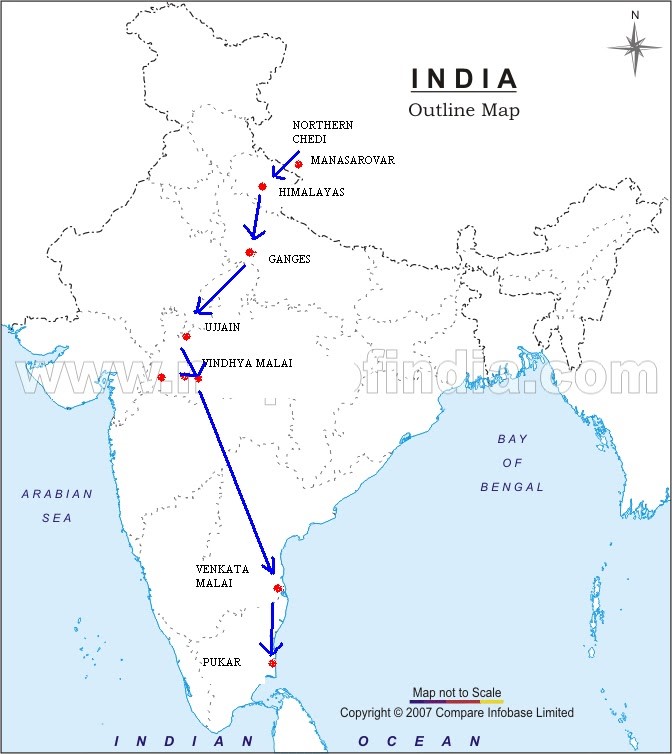
Figure 17
This description at once changes the currently held popular views on Holi festival and the location of Northern Chedi. In the tourist map for someone coming from the Himalayan region, Venkatam hills being held as an important place of destination is something that conveys more than just a hill station or a stop-over. The popularity of Lord Venkateśvara even as early as 2000 years ago is the inevitable message of this travel map.
Further back in time, Venkatam gets frequent mention in Tamil Sangam texts. The grammar book of the 3rd Sangam, namely Tol Kāppiyam begins with the name Venkatam as the northern boundary of the speakers of Tamil language.[vii] Tol Kāppiyam was composed at the beginning of 3rd Sangam after the previous Sangam location was lost to the seas. By the calculation of the Sangam age-years given in another text called “Iṟaiyanār Agapporuḷ Urai”, the previous location was lost in 1500 BCE which means the reference to Venkatam as northern boundary had been made soon after 1500 BCE.
The existence of the name Venkatam as early as 1500 BCE reiterates the presence of the God Venkateśvara even at that time as the etymology of ‘Venkatam’ is traced to ‘burning the body (of sins)’. It is VenGhata where ‘ghata’ means pot, a reference to human body. The hymns of Vaishnavite saints (Alvars) also convey that this God removes the sins of previous and current births. In other words the Lord burns the sins of the human body. So this goes without saying that the hill got the name from the deity and not vice versa. The reference to Venkatam in Tol Kāppiyam is proof of existence of this deity from before 1500 BCE.
How widespread was the popularity of Venkateśvara in olden times?
The reference to Venkatam hills as the northern boundary of Tamil speakers opens up considerable part of South India to have been inhabited by those who spoke Tamil. This is because Venkatam is a range of mountains running from north to south in the form of a cobra. Abodes of Gods dot the important organs of the cobra. Puranic description of Venkatam is such that Nallamala housing Srisailam forms the tail of the cobra. Ahobilam is located at the trunk. Tirupati is at the back of the cobra’s hood while the mouth can be identified by Kalahasti. A Sangam poem also reiterates the idea that the range is a house of Gods.[viii]
The regions on both sides of the Venkatam range had people finding mention in the Tamil Sangam compositions. While Nannan was associated with Konkan, Velir were reigning from Kudremukh in Karnataka. On the eastern side, Kallada was the native place of Sangam poet ‘Kalladanar’. In all his compositions, he describes the scenes of Venkatam hills, the ruling dynasty of Pulli of Venkatam and the difficulties in crossing this range. While all his compositions found in Agananuru describe the difficulties faced by those going for trade while crossing the range from south to north, in one composition in Purananuru[ix] he describes a scene of drought induced poverty that drove the hero into crossing Venkatam from north to South to reach Tamil kings.
From the Sangam poetry it is known that the Venkatam range was a well-known landmark for people going for trade and livelihood. In all those trips the main deity of the hills, Venkateśvara must have been worshiped to ensure safe journey and return. With the range spanning across South India, the deity also must have been a popular one throughout South India. From the Silappadhikaram narration of the newlywed couple of Northern Chedi making a stop at Venkatam it is known that Venkateśvara was popular throughout India 2000 years ago.
Who among them had gone to south Mesopotamia taking with them Venkateśvara and his consort Padmavati? There is a clue to this which we will discuss in the next part of this article.
(to be continued…)
* Silappadhikaram can be dated at 2000 years BP based on a cross reference from a Satakarni who helped the Chera King Senguttuvan in his northern expedition. Silappadhikaram makes a reference to a victory over the Yavanas by this king during the expedition (Ch 28: lines 141-142). Gautamiputra Satakarni was the only Satakarni who scored a victory over the Yavanas. This conveys that together they have fought and won the Yavanas. From the date of Gautamiputra Satakarni, the Silappadhikaram date can be made out as belonging to the beginning of the Common Era.
Notes
[i] Kurinji Paattu
[ii] During, B.S., 2011, “Seals in Dilmun Soceity”, University of Leiden.
[iii] “Babylonia, the Gulf Region and the Indus: Archaeological and Textual Evidence for Contact in the Third and Early Second Millennia BC (Mesopotamian Civilizations)” https://www.harappa.com/content/babylonia-gulf-region-and-indus-archaeological-and-textual-evidence-contact-third-and-early
[iv] Mahabharata: 7-23
[v] Silappadhikaram: Chapter 11: lines 41-52
[vi] Silappadhikaram: Chapter 6: lines 1-33
[vii] Tol Kāppiyam: Line 1
[viii] Agananuru: 359
[ix] Purananuru : 371
Disclaimer: The opinions expressed within this article are the personal opinions of the author. IndiaFacts does not assume any responsibility or liability for the accuracy, completeness, suitability, or validity of any information in this article.
Dr Jayasree Saranathan is a researcher, writer and astrologer with a PhD in Astrology. Her research areas include Indology, Hindu Epics, Tamil Sangam literature and Astro-meteorology.

